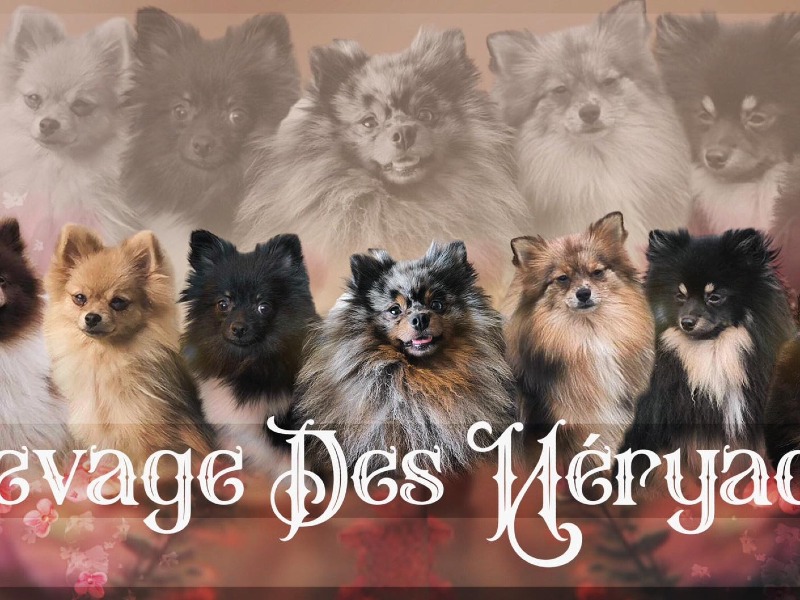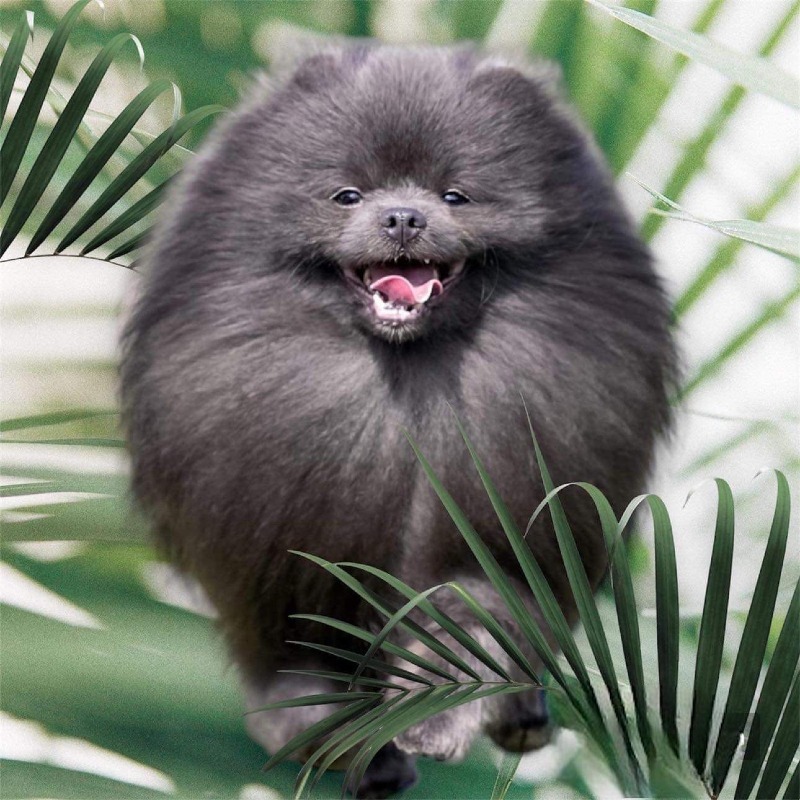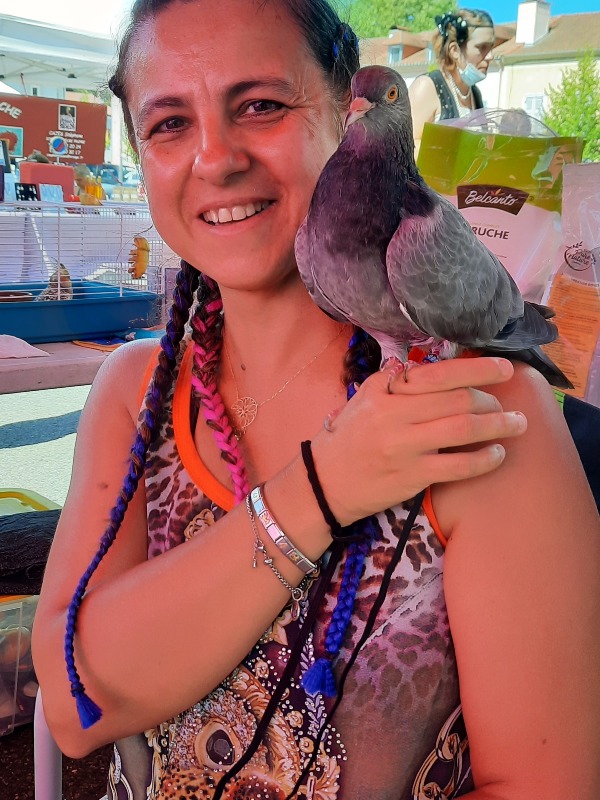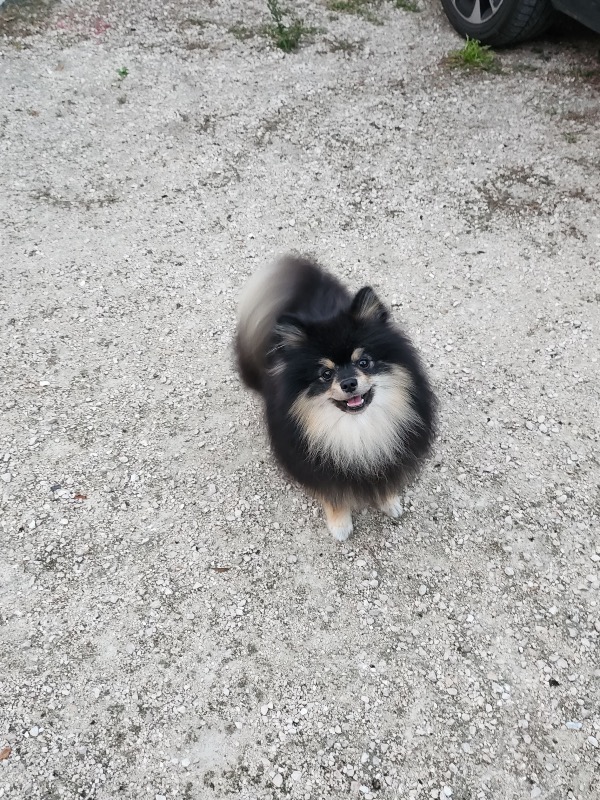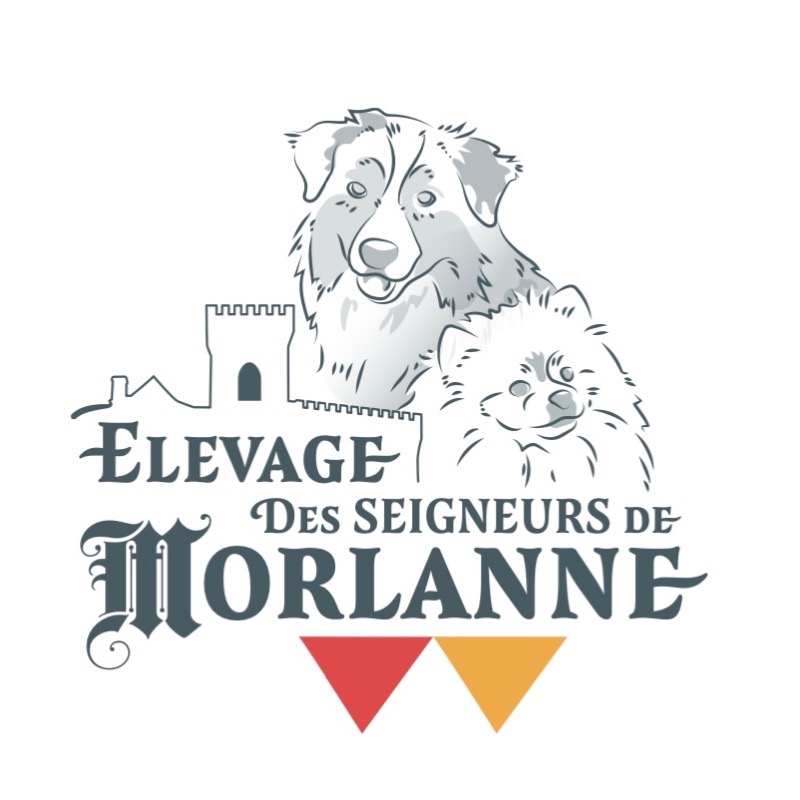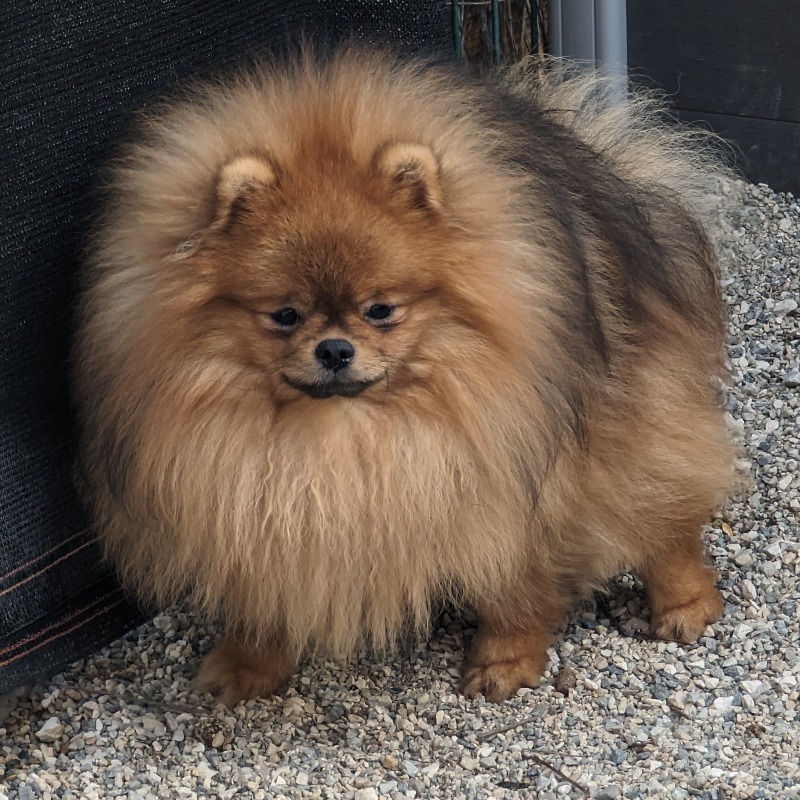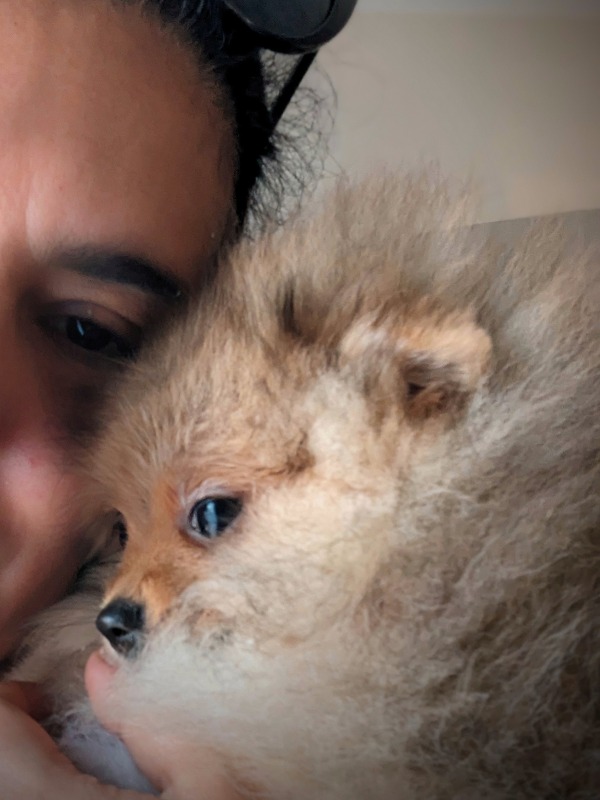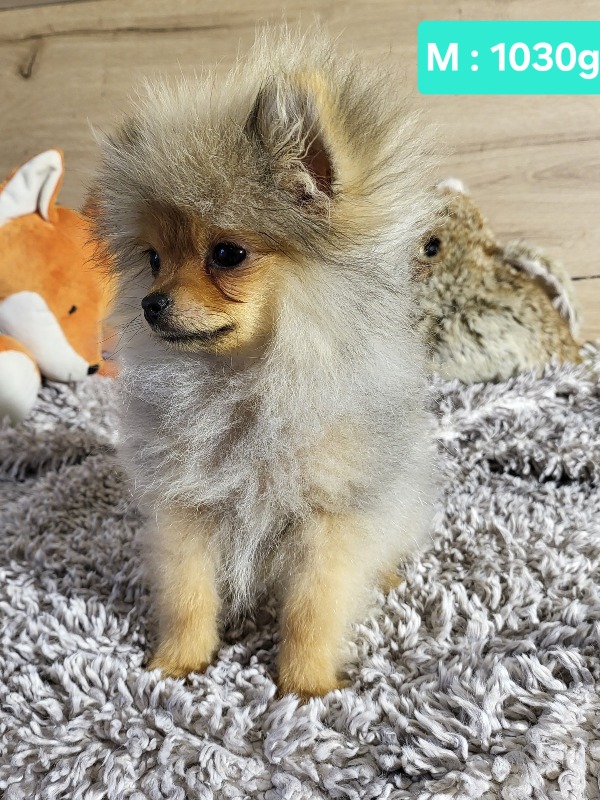German spitz
Autres noms : Deutscher spitz, Pomeranian, German spitz, Keeshond, Pomerania, Dutch spitz
Discover the German Spitz, a dog full of liveliness and intelligence, known for its thick and fluffy coat. Ideal for families, it combines loyalty and playfulness, making it an adorable and protective companion. Enjoy its dynamic personality and irresistible charm!
Awareness of acquiring an animal
Adopting or breeding a dog is a responsibility that must be carefully considered. Dogs are loyal companions that require time, attention, and constant care. Whether for leisure, passion, or professional breeding, it is crucial to understand the specific needs of each breed. Provide them with a loving and stimulating environment, and avoid any impulsive acquisition that could harm their well-being. Be a vigilant and committed owner for a happy and healthy companion.
To learn more about animal welfare, we invite you to consult our FAQ by clicking the button below:
Origins and history
The German spitz finds its origins in Europe, particularly in Germany and the Nordic regions. Its ancestors were working dogs used by indigenous peoples for guarding, hunting, and sledding. The earliest records of these dogs date back several centuries, when they were indispensable on farms and in villages. Their endurance and intelligence made them valuable companions for humans.
Over time, different varieties of spitz developed according to regional needs and specific requirements. Breeders selected these dogs for various physical and behavioral traits, resulting in a range of sizes from small to large. The German spitz is distinguished by its dense fur and cheerful character, making it a popular choice as a pet.
In the 20th century, the German spitz began to gain popularity beyond Germany's borders. Dog shows helped promote the breed, and a genealogy book was published to standardize its characteristics. Today, this breed is appreciated for its friendly and protective temperament while remaining an excellent working dog and a loyal companion.
Physical characteristics
The German Spitz is a dog breed that stands out due to its distinctive appearance and physical characteristics. It has a compact and well-proportioned stature. The size varies depending on the sub-breeds, ranging from small models to larger dogs. Generally, these dogs measure between 20 and 60 centimeters at the withers.
The coat is one of the most striking features of this breed. It is dense, double, and can come in various colors, including black, white, orange, and other variations. The undercoat is thick and insulating, while the outer coat is long and straight, adding to the dog's aesthetic appeal. The fur is particularly spectacular around the neck, where it forms a sort of ruff, highlighting their majestic appearance.
Another notable characteristic is the shape of the head. The skull is slightly rounded with a pointed muzzle, and the eyes, which are usually almond-shaped, give a lively and intelligent expression. The ears, always erect, are also small and remain upright, enhancing the German Spitz's alert expression. These combined physical traits create a balanced and harmonious silhouette, making this breed very attractive to dog enthusiasts.
Character
The German Spitz is a dog breed recognized for its distinct appearance and marked personality traits. This dog is often described as both intelligent and curious. It is very observant of its environment, which allows it to easily notice any changes around it. This vigilance makes it a good guard dog, as it alerts its owners to the presence of intruders.
Another notable trait of the German Spitz is its energy. These dogs are active and require regular stimulation, both physical and mental. Daily walks, as well as interactive play, are essential for their happiness and well-being. Their playful nature also makes them excellent companions for families, as they are generally friendly with children.
Finally, the German Spitz can sometimes exhibit an independent temperament, which means that a good level of training and socialization from a young age is crucial. They can be stubborn, but with patience and consistency, they show unwavering loyalty. This blend of personality traits makes this breed a popular choice among dog lovers.
Life expectancy
The life expectancy of German Spitz dogs typically ranges from 12 to 16 years, although some individuals may live longer with proper care. This longevity is supported by factors such as genetic health, diet, regular exercise, and appropriate veterinary care.
An important aspect to consider is the size of dogs in this breed. The different sizes, ranging from dwarf to large, can influence their life expectancy. Generally, smaller dogs tend to live longer than their larger counterparts. Therefore, while life expectancy varies according to size, the majority of dogs remain healthy into old age if their lifestyle is suitable.
It is crucial to monitor the health of dogs throughout their lives. Preventive care such as regular vet visits, a balanced diet, and exercise are essential for maximizing their lifespan and quality of life. Additionally, socialization and training also play a major role in their emotional and physical well-being.
Exercise and activity needs
German spitz dogs are energetic animals that require regular physical activity to stay healthy and balanced. They need at least an hour of exercise each day, which can include walks, outdoor play, and running sessions. These dogs are naturally active and curious, prompting them to explore their environment. Therefore, owners should ensure they provide stimulating activities to prevent boredom and destructive behaviors.
In addition to physical exercise, mental activity is equally crucial for this breed. Puzzle games, obedience training, and agility challenges can help stimulate their minds. German spitz dogs are often very attached to their families and enjoy interacting with humans. Consequently, incorporating board games or group activities can strengthen the bond between the dog and its owner while meeting their social interaction needs.
Proper socialization from a young age is also essential. Dogs of this breed should be exposed to different environments, people, and other animals. This exposure helps them develop a balanced personality and reduces their tendency to be wary. Therefore, a regular exercise program combined with mental and social activities will contribute to the well-being of this dynamic and affectionate breed.
Recommended diet
The diet of the German Spitz is essential for ensuring its health and well-being. This active dog requires nutrient-rich food to support its dynamic metabolism and dense coat. A balanced diet should include high-quality proteins from animal sources such as chicken, beef, or fish. These proteins are crucial for muscle development and energy maintenance.
Carbohydrates also play a key role in the diet of this dog. It is advisable to incorporate healthy starches like brown rice or sweet potatoes, which provide the necessary energy while being easy to digest. Vegetables, such as carrots and green beans, can be added in small amounts to provide essential fiber and vitamins.
It is vital to control portion sizes, as this breed is prone to obesity. The diet should be tailored to the dog's age, weight, and activity level. Additionally, it is recommended to prioritize high-quality kibble specifically formulated for small breed dogs to ensure optimal nutrition. Finally, be sure to always have fresh water available to maintain good hydration.
Training and obedience
Training and educating German Spitz dogs requires a specific approach due to their character and temperament. These dogs are intelligent and full of energy, which makes their learning quick, but they can also be stubborn. Establishing a relationship of trust and mutual respect from the start is essential to create a positive atmosphere during training sessions.
Positive reinforcement is the preferred method for training. Reward your dog with treats, petting, or verbal praise when they obey or learn a new command. This stimulates their desire to learn and strengthens their bond with you. Consistency is also crucial. Set clear rules and remain consistent in your expectations to avoid any confusion.
Regarding socialization, expose your dog to various environments, people, and other animals from a young age. This will help them become a well-balanced and confident adult. Finally, it’s important to incorporate playtime into training sessions to ensure that learning remains a pleasant experience for the dog.
Behavior with children
The German Spitz is a dog known for its friendly temperament and great sociability, making it an ideal companion for families with children. Its behavior towards the younger ones is generally positive, as this breed enjoys interacting and playing. Their playful and energetic personality helps create strong bonds with children, fostering moments of closeness and joy.
However, it is essential to teach children proper manners when interacting with the dog. Young children can sometimes be rough without realizing it, which could frighten or disturb the animal. Adequate guidance helps establish mutual respect and understanding.
Additionally, the German Spitz has a strong personality and can be protective of its family. This requires early socialization to prevent undesirable behaviors. By exposing the dog to different situations, noises, and people, it learns to behave calmly in the presence of children, contributing to harmony within the household.
It is fundamental to consider that each dog has its own temperament. Even though the breed is generally benevolent, each individual may exhibit nuances in behavior. Constant attention and positive training will ensure a peaceful and joyful coexistence between children and their four-legged companion.
Compatibility with Other Animals
The German Spitz is generally considered a sociable and adaptable breed, making it a good companion for families with other pets. Thanks to their friendly temperament and curious nature, these dogs can peacefully coexist with other dogs and even cats, as long as they are properly socialized from a young age. Early exposure to other species is essential for promoting positive interactions.
However, it is important to note that the behavior of Spitz can vary from one individual to another. Some may have a more pronounced hunting instinct, which could drive them to chase smaller animals. Therefore, supervision during initial encounters between a Spitz and other animals is recommended to avoid incidents. Patience and positive reinforcement are effective approaches to encourage good relationships.
Finally, the environment plays a crucial role in compatibility. A suitable space, where each animal has its own corner and sufficient resources (food, toys, etc.), can help reduce tension. In summary, with proper socialization and a thoughtful approach, the German Spitz can harmoniously integrate into a multi-pet household.
Grooming needs
Grooming and maintenance for German Spitz dogs are essential for their well-being and health. These dogs have a thick double coat, consisting of a dense undercoat and a longer outer coat. To keep their fur in good condition, regular brushing is necessary, ideally two to three times a week. This helps remove dead hair, prevent tangles, and reduce shedding in the house.
Bathing is also an important aspect of their care. A bath every two to three months is recommended, using specific dog products that are gentle on their skin. Brushing before the bath helps to detangle the fur, making washing easier.
Additionally, regular checks of their ears, teeth, and nails are crucial. Ears should be examined for any signs of infection, while teeth should be brushed regularly to prevent tartar buildup. Finally, nails should be trimmed about once a month to avoid discomfort and joint problems. Overall maintenance ensures the health and happiness of these dogs.
Health
The health of the German Spitz dog breed involves several important aspects that potential and current owners should consider. Firstly, this breed is generally robust, but like any dog, it can be prone to certain health conditions. Hereditary issues are relatively rare, but some may include eye disorders such as cataracts and skin diseases like dermatitis.
Nutrition is crucial for the overall health of these dogs. A balanced diet tailored to their size, age, and activity level will help prevent obesity, which is a common issue within this breed. Regular exercise is also essential, not only to maintain a healthy weight but also to stimulate their intelligence and mental well-being.
Finally, preventive care, such as regular veterinary visits, vaccinations, and parasite treatments, should be integrated into their care routine. Special attention to dental hygiene is also recommended, as dental problems can affect their quality of life. By providing adequate attention to their health, owners can ensure that their companion enjoys a long and fulfilling life.
Environment and habitat
The German Spitz is a dog breed that stands out for its dense coat and lively appearance. Originally, these dogs evolved in a variety of environments, including cold and temperate regions of Europe. Their thick fur allows them to effectively withstand harsh weather conditions, protecting them from the elements and freezing temperatures.
Their ideal habitat consists of open spaces where they can expend energy and play. These dogs are very energetic and require regular physical activity. They thrive in environments where they can interact with their human family, as well as explore their surroundings. Daily walks and outdoor games are essential for their physical and mental well-being.
In addition to their need for space, German Spitzes are social animals that form strong bonds with their owners. They adapt well to various types of habitats, as long as their exercise and stimulation needs are met, whether in an apartment or a house with a garden. Proper socialization and early training are crucial to ensure balanced behavior within the family.
Name ideas
Choosing a name for a German Spitz is a delicate task that deserves careful consideration. A good name should be easy to pronounce, remember, and call out, both for the dog and its owners. It is often recommended to choose names with two syllables, as dogs tend to respond better to them. Also, think about the originality of the name, so that it doesn’t sound like common commands such as "sit" or "come."
The name can also reflect the dog’s appearance, character, or the breed’s origin. German Spitzes are lively, affectionate dogs, and sometimes a bit mischievous, so it might be wise to opt for names that highlight these traits. Finally, consider themes that are meaningful to you, whether they are characters from movies, places, or even cultural references.
Here are some suggestions for naming a German Spitz:
Flocon, Moka, Nénuphar, Pixie, Teddy, Choupette, Ziggy, Kiki, Yuki, Nino, Sushi, Salsa, Charlie, Bella, Lupo.
These names are varied, cute, and fit well with the personality of a German Spitz. Choose the one that resonates the most with you and your future four-legged companion!
Average purchase price
The purchase price of a German Spitz dog varies depending on several factors, including size, age, lineage, and breeder. Generally, puppies from unique lineages, with a history of competitions or good morphological characteristics, can reach higher prices. For a quality puppy from a reputable breeder, prices often range between 800 and 2000 euros.
Smaller sizes, such as the Pomeranian Spitz, are often the most sought after, which can increase their cost. On the other hand, prices may be more affordable for standard-sized puppies or those with less well-known parents. It is essential to choose a breeder who adheres to breed standards and practices responsible ethics to ensure the health and well-being of the animals.
Apart from the initial cost, it is important to consider the long-term expenses associated with dog ownership, including food, veterinary care, grooming, and other accessories. These costs should be anticipated to ensure the animal's well-being throughout its life.
Expenses
Owning a German Spitz dog involves regular expenses that vary based on several factors. On average, you should budget around 100 to 200 euros per month. This amount can fluctuate depending on the specific needs of the animal and the owner's choices.
Feeding expenses often represent a significant portion of the budget. Good kibble suitable for this breed can cost between 30 and 60 euros per month. It is essential to choose high-quality food to ensure the health and well-being of the animal.
Veterinary care also constitutes a notable expense. Routine check-ups, vaccinations, and parasite treatments can add up, especially if unexpected visits are necessary. Budgeting 20 to 50 euros per month for these services is a reasonable estimate.
Finally, other costs should be considered, such as accessories (collars, leashes, toys) and grooming services. Depending on the owner's choices, these expenses can add an additional 10 to 30 euros per month. In total, a budget of 150 to 250 euros per month should be anticipated to ensure the quality of life for a dog of this breed.
Destination and usage
The German Spitz is a popular companion dog due to its affable nature and charming appearance. These compact dogs, with their dense fur and curled tails on their backs, attract attention and often create strong bonds with their owners. Their sociable nature makes them well-suited for family life, and they generally get along well with children and other pets.
These dogs are often used in recreational contexts and family activities. Whether during walks in the park, hikes, or playtime at home, their energy and curiosity make them very engaging participants. They love interaction, which encourages owners to spend quality time with them. However, their need for mental and physical stimulation requires regular walks and interactive play to avoid boredom.
Finally, the presence of the German Spitz brings not only joy but also a sense of security to the home. Alert and protective, these dogs are naturally vigilant, making them excellent companions. They affectionately invest themselves in their owners' daily lives, thereby strengthening the human-animal bond.
Legislation and regulation
The legislation concerning dog breeds, including German spitz, varies significantly from country to country. In many European countries, these dogs are often well accepted and can be bred without strict restrictions. However, certain regions impose regulations related to breeding, sale, and ownership to ensure animal welfare and prevent behavioral issues.
Conversely, in some countries, restrictions may exist due to perceptions associated with a certain aggressiveness of the breed. Laws may prohibit their ownership or impose specific conditions such as obtaining a permit, mandatory training, or liability insurance.
Globally, the trend is towards increasingly strict regulations regarding dog owner responsibility. Promoting proper education for owners and raising awareness about the breed are common measures observed. These legislations aim to reduce bite incidents while allowing animal lovers to enjoy these dogs.
Official recognition
The German Spitz is a group of dog breeds characterized by their dense coat, upright ears, and curled tail over their back. This breed is very popular in many countries, and its official recognition varies.
In Europe, several countries have integrated the German Spitz into their dog standards. The International Canine Federation (FCI) recognizes this breed and assigns it specific classifications. Countries like Germany, where the breed originates, and France have dedicated clubs that promote the breed and organize exhibitions.
In the United States, the German Spitz is not recognized by the American Kennel Club (AKC), but some varieties are accepted by other organizations. This limits the rise of these dogs in the American market, where other breeds dominate. In contrast, Canada and several Latin American countries have adopted standards similar to those of the FCI.
Overall, although recognition may vary from country to country, the German Spitz continues to be celebrated worldwide for its qualities and distinctive appearance.
Pedigrees
To obtain a pedigree for German Spitz dogs, several specialized registries and clubs exist. In France, the Société Centrale Canine (SCC) is the official body that manages the registration of purebred dogs, including the German Spitz. As an affiliate of the Fédération Cynologique Internationale (FCI), the SCC issues pedigrees that comply with international standards, ensuring the traceability of bloodlines.
There are also breed clubs that play a crucial role in promoting and monitoring German Spitz. The Club Français du Spitz, for example, is dedicated to this breed. It organizes events, exhibitions, and beauty contests that allow dog owners to earn qualification points and enhance the reputation of their animals.
Other countries have their own registries for German Spitz, such as the Deutscher Spitz Verband in Germany. This organization is the recognized authority for the breeding and registration of German Spitz in Germany. In addition to providing pedigrees, these organizations also contribute to the preservation of the breed’s characteristics and health through responsible breeding practices.
To obtain a pedigree, it is essential for the dog to be registered with one of these registries from birth, with procedures often simplified by recognized breeders. Breeders must also adhere to strict standards to ensure their dogs meet breed standards, which include health checks and behavioral assessments. These efforts aim to ensure the quality and integrity of the German Spitz, both in terms of health and physical appearance.
Prohibitions
Regulations concerning dog breeds, including German Spitz types, vary significantly from one country to another. In some countries, laws are strict regarding the ownership of dogs deemed potentially dangerous, which may include certain Spitz breeds. These restrictions often aim to minimize bite incidents and ensure public safety.
In Europe, several countries have implemented lists of banned or regulated breeds. For example, countries like France and the United Kingdom have specific laws that may restrict the ownership of certain breeds perceived as aggressive. This can impact the popularity and breeding of Spitz breeds in those regions.
On the other hand, some countries adopt a more lenient approach, focusing more on owner responsibility than on the breeds themselves. This includes laws that require appropriate living conditions, dog socialization, and training for owners. Thus, regulations can vary not only by country but also within different regions of the same country, requiring prospective owners to research local laws before adopting a German Spitz.
Breeders of German spitz
Want to see more breeders of German spitz?
Check out the page of our directory listing all breeders of German spitzClassified Ads of German spitz
Breed clubs of german spitz
No of german spitz breed clubs are currently registered on Preeders.
If you would like to highlight your breed club, sign up for free now and be the first to appear on this page.

